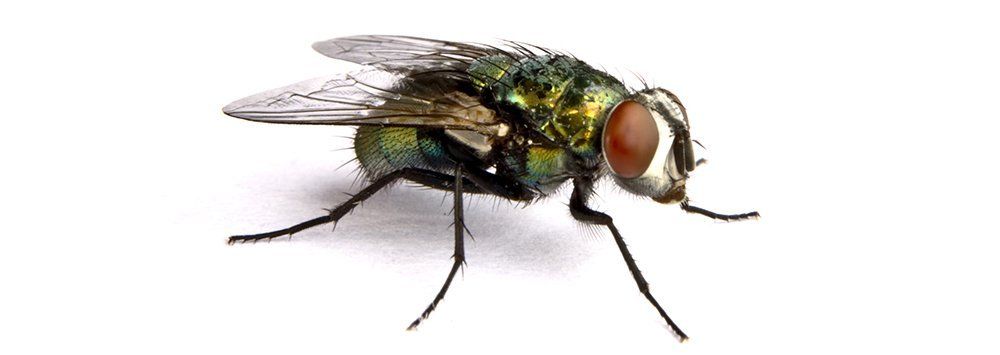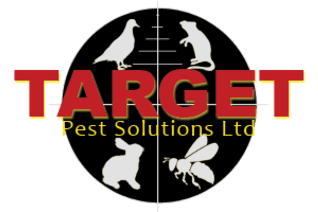NON-STINGING INSECTS
FLIES

Flies can transmit bacteria and fungal pathogens. These pathogens live on and in the bodies of the flies amongst the numerous body hairs, in the gut and blood system. Bacterial pathogens include Klebsiella spp, Campylobacter spp, Streptococcus spp, Chlamydia spp. Funal pathogens include Candida spp, Mucor spp and Aspergillus spp. Flies live on dead or decaying matter and therefore transmit these pathogens when landing on surfaces such as food as their contaminated body parts come into contact with the food.
Flies need their food to be a certain liquidy consistency before ingesting it and in order for them to do this, they salivate from their glands and vomit some of their gut contents onto the food. This rich concoction of digestive enzymes, bacteria, viruses and protozoa from their gut breaks down their food into a consistency which they can then feed from. The process of regurgitation and ingestion is repeated during feeding. Additionally, flies also defecate on their food while feeding to reduce their overall body mass before flying off. These undesirable characteristics cause contamination of food from their saliva, vomit and defecation deposits. Blocked drainage channels and abundant organic matter (vegetable/animal waste) offer ideal breading opportunities.
If you are suffering from a fly problem, flies can cause distress as well as being a source of infection so talk to one of our experts today. Abating the infestation will start with a site assessment to identify the source of the problem and removal (where possible) of the food source responsible for perpetuating the infestation and a treatment plan to eradicate the flies.
COCKROACHES

Cockroaches are omnivorous and possess mouthparts which have adapted to chewing, thereby facilitating a consumption of a vast number and types of food sources. They prefer starchy and sugary foods but will also feed on dead and decaying matter, blood and faeces. In order to feed, they exhibit the same feeding pattern as flies, regurgitating partially digested food and defecating on their food during feeding. Cockroaches are involved in disease transmission because of their indiscriminate contact between clean areas/foods and bacteria-laden surfaces. The bacteria is transferred onto the hairs of the cockroach during contact with harmful bacteria and then deposited during contact with clean surfaces and foods.
Cockroach allergens are known to be responsible for allergic and atopic reactions. Their faeces and skin casts (from shedding) can cause an allergic response and asthma to those living within the same proximity. Females are responsible for leaving larger quantities than the males. They are extremely mobile creatures, thereby responsible for spreading their faeces and skin casks over wide areas spreading bacteria and increasing the likelihood of their faeces and skin casks coming into contact with humans. They prefer warm, humid, dark areas and therefore, the presence of cockroaches in the daytime is usually indicative of the size of the infestation. In the UK, there are four main species of cockroach: Oriental, German, American, and Brown-Banded Cockroach.
An infestation of cockroaches in your home or business can be damaging to your health, professional reputation and stressful to deal with so talk to an expert today about eradicating them. Abating the infestation will start with a site assessment to identify the source of the problem and removal of their food source and a treatment plan to eradicate them.
FLEAS

Adult fleas live between 6-12 months and during that time, the female will lay around 300-1000 eggs in small batches of 3-18 per day and 4-8 eggs laid after each blood meal. Therefore, fleas have the potential to multiply and infest an area rapidly. The 15 day lifecycle of the flea comprises:
Egg -> larvae -> pupae -> adult flea (blood meals taken from the host such as a cat/person)
Approximately 95% of the population of an infestation will live in the environment and not on the host, eg, carpets, between floorboards, etc. The flea larvae feed on virtually any organic debris including the host’s skin cells, faeces and partly digested blood from the adult flea. They are most hardy in the pupae stage and can live in pupae form almost indefinitely if there are no hosts available upon which to feed (eg, a vacant property).
Fortunately, following the demise of the black rat in the UK, the tropical flea which lives on this rat and is responsible for the bubonic plague (the black death), is rarely found. These days, the most common flea in the home is the cat flea (Ctenocephalides felis), followed by the bird flea (Ceratophyllus gallinae). Fleas can cause significant discomfort to people because their biting can cause considerable itching which may then lead onto a secondary infection from numerous bites and intense itching.
Currently, there is minimal evidence that cat fleas vector disease, however, they are capable of transmitting Bartonela henselae which is unlikely to cause symptoms in people or cats unless they have low immunity.
Abating your flea infestation will start with a site assessment to identify the source of the problem, the species involved and an appropriate treatment plan to eradicate them and prevent reinfestation.
MISCELLANEOUS INSECTS
Beetles, Weevils, Moths and Spiders
There are numerous species of beetle, weevil, moths and spiders and an effective treatment strategy will follow a comprehensive site assessment, identification of the species and the food source.



